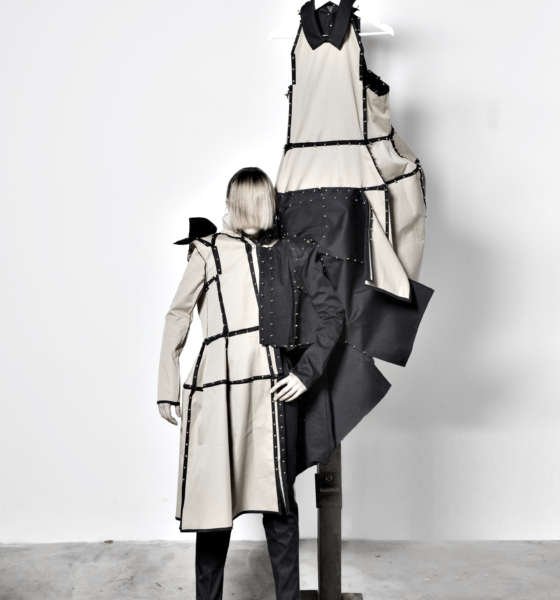

Environment
A manifesto for fashion that truly challenges the status quo
Alex McIntosh of the Centre for Sustainable Fashion in London provides a manifesto that should be part of everyone’s buying psyche.
This article originally appeared in Blue & Green Tomorrow’s Guide to Sustainable Spending 2013.
At the Centre for Sustainable Fashion, it’s never our intention to be worthy or preachy but we do see our role as provocateurs, challenging the status quo. Fashion moves so fast that sometimes it’s difficult to stop and take stock, there’s always a new trend, a new face, a new shop but let’s face it, in our hearts we all know that at least 50% of what we buy reflects little more than an unbridled desire to consume.
It’s not that every fashion choice has to be agonised over; it’s just that the unquestioned purchase is often the disappointing purchase. An impulsive buy can on occasion be wonderful but more often than not it seems to fit less well or look less good once it’s out of the changing room.
Suffice to say fashion gluttony creates an ever more insatiable appetite, one that cannot be satisfied. Considered and compassionate consumption should be the only trend we are following in 2014 and it is our firm belief that choosing better will make you feel better.
There is no getting away from the fact that sustainability has the capacity to scramble the mind; it can feel like a set of ever changing rules and restrictions, shifting sands that can leave you longing for the safety and security of the high street.
Just remember, confusion is an inevitable part of reflection and reflection is the route to active and informed choices; whilst it may sometimes feel easier to put the blinkers on and keep going as is, as Socrates once said, “The unexamined life is not worth living.”
So in order to help you choose well, we’ve put together a short ‘manifesto’; not an exhaustive set of rules or an overblown design for life, but simply questions and considerations that sum up some of the personal and global issues that you might want to consider before you hand over the credit card.
On the whole, the fashion industry doesn’t want to give you the space to be inquisitive or to actively engage your imagination; it wants to keep you on the buying treadmill, breathless with no time to ask why.
We always want you to ask why and not just why, also where, who and how. So here are some of the whys, wheres and hows that should be part of everyone’s buying psyche.
– Do you ever question the people from whom you’re purchasing? Wouldn’t you expect them to know where the things they’re selling came from and how they were made? Start asking and people will have to start answering
– Look at your clothes. Hundreds of people’s lives and livelihoods are contained in every garment; the farmer, the spinner, the weaver, the knitter, the dyer, the printer, the seamstress, and the list goes on. Would you want to share their lives or survive on their livelihoods?
– What do you value: quality, detail, heritage, performance, durability, uniqueness, flamboyance, frivolity? Take the time to seek out designers and brands whose work aligns with your sensibilities and support them
– Here’s an irony: whilst millions of clothes are discarded each day, the fashion industry expends vast amounts of energy and resources on making new things look old. How about this: if you want something that looks worn, buy something worn, there’s plenty to choose from! If you want something ‘new’ buy something new and wear it in yourself
– Acquiring something ‘new’ should be a mutual commitment; the seller/giver should be promising you the best experience possible and you should promise to live that experience to the full. Look at what you own: has everything been lived in to the full? If not, why not?
– Too much stuff just clutters up your life and overwhelms your head. Have a physical and emotional clearout, not so you can buy more but so you can see what you have and what you really care about
– Ask yourself why certain things are precious to you. Is it because the thing itself is particularly beautiful or functional? Is it because of the time or place you were in or the person you were with when you were given/bought it? Understanding why you treasure the things you do might help you to choose and use with more care
– Be part of a new fashion tribe, one that respects balance as well as excess; one that acknowledges collective responsibility alongside individual freedom and one that seeks out and celebrates fashion that truly challenges the status quo
Alex McIntosh is business and research manager at the Centre for Sustainable Fashion at London College of Fashion. Image by Sean Michael.
Further reading:
Is a passion for fashion compatible with a concern for the world around us?
The True Cost: the future of fashion is on sale


 Environment10 months ago
Environment10 months agoAre Polymer Banknotes: an Eco-Friendly Trend or a Groundswell?

 Environment11 months ago
Environment11 months agoEco-Friendly Home Improvements: Top 7 Upgrades for 2025

 Features9 months ago
Features9 months agoEco-Friendly Cryptocurrencies: Sustainable Investment Choices

 Features10 months ago
Features10 months agoEco-Friendly Crypto Traders Must Find the Right Exchange





























